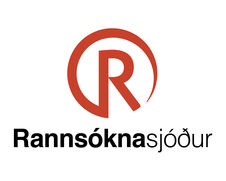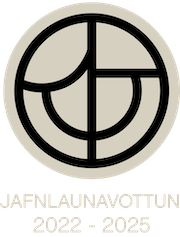Stofnerfðafræði Hafarna á Íslandi - áhrif skyldleikaæxlunar og stofnstærðar á sameindabreytileika og hæfni - verkefni lokið
Fréttatilkynning verkefnisstjóra
Haförnum (Haliaeetus albicilla) var nærri útrýmt á Íslandi í síðari hluta 19. aldar og á þeirri 20., líkt og víðar í Evrópu, bæði vegna ofsókna og notkunar á þrávirkum lífrænum eiturefnum. Örnunum fækkaði hér úr um 150 pörum um miðbik 19. aldar í 20 pör 1914, þegar stofninn var friðaður.
Þrátt fyrir friðun stækkaði stofninn ekki fyrr en um lok sjöunda áratugsins þegar eitranir fyrir refum voru stöðvaðar. Stofnvöxturinn á Íslandi er þó mun hægari en á Norðurlöndum, mögulega vegna skyldleikaæxlunar. Markmið verkefnisins var að greina áhrif lítillar stofnstæðrar og skyldleikaæxlunar á breytileika erfðamengja og hæfni einstaklinga. Athuguð voru einstök sýna- og gagnasett sem safnað hefur verið frá 2001-2012 á Íslandi og þau borin saman við breytileika í erfðamengjum hafarna frá Grænlandi, Noregi, Danmörku og Eistlandi, bæði kringum upphaf og við lok 20. aldar. Auk þess voru athugaðar
aðferðir til að greina Z-litninga og ummerki um aðrar lífverur í DNA-inu sem var einangrað úr blóði
hafarnaunga, þá er ítarleg kortlagning hafin á erfðamengi hafarnarins. Helstu niðurstöður
verkefnisins eru að stofnarnir á Íslandi og Grænlandi eru erfðafræðilega ólíkir hvor öðrum og eru vel aðgreindir frá meginlandsstofnunum og virðist sem slík aðgreining hafi aukist á 20. öldinni. Báðir eyjastofnarnir búa yfir litlum erfðabreytileika og sýna merki um skyldleikaæxlun. Óvæntar
niðurstöður fengust við greiningar á hvatberaerfðamengjunum en tvær aðskildar þróunarlínur
fundust innan hvers lands.
Niðurstöðurnar auka við þekkingu okkar á haförnum og erfðafræði lítilla stofna ránfugla.
Raðgreining erfðamengjanna er efniviður fyrir frekari rannsóknir í þróunarfræði, náttúruverndarlíffræði og verndun hafarnarins bæði á Íslandi sem annarsstaðar. Nýta má upplýsingar við vöktun og greiningu á breytileika innan hafarna. Kortlagning erfðamengisins nýtist í greiningu á erfðafræði einstakra eiginleika og gena.
English:
The White-tailed eagle (Haliaeetus albicilla) was almost exterminated in Iceland during the 20th
century, as elsewhere in Europe, because of humans and the use of organic pollutants. The eagles in Iceland lowered in numbers from 150 breeding pairs in the mid-1800s down to 20 pairs in 1914 when they were protected by law. Despite protection the population did not grow until 1970, mainly due to fox poisoning. The growth rate is slower than among White-tailed eagles in Scandinavia, possibly due to inbreeding depression. The aim of the project was to analyse the effect of small population size and inbreeding on genomic variation and fitness, by analysing a unique sample and dataset gathered over years 2001-2012 in Iceland and to compare with genomic variation in White-tailed eagles from Greenland, Norway, Denamark and Estonia, from the turn of the 20th and the 21st century. In addition we looked in to methods of detecting the Z-chromosome, indication of genomes from other organisms extracted from the blood of the eagles, and lastly a detailed annotation of the genome has started. The main result is that the populations from Iceland and Greenland are genetically differentiated and distinct from the mainland populations. The divergence of the two populations from the other has increased during the 20 th century due possibly due to drift. Furthermore the two island populations show less diversity and signs of inbreeding in comparison with the mainland populations. The mitogenomes showed a surprising result, but two distinct lineages were found within the small island populations.
∙ Information on how the results will be applied
The result adds to the knowledge on White-tailed eagles and the genetics of small raptor
populations. Information on the genomic variation can be used for monitoring and in studies on
other populations of the same species. An annotated genome will be useful for comparisons among species and for studies on functional genetics. Evaluation of methods to identify the Z-chromosome, which is important in analysis of genomic variation, can be applied to other species. The data will be used in further studies of the White-tailed eagle in Iceland.
∙ A list of the project’s outputs
Student thesis:
Sólveig Magnea Guðjónsdóttir 2020: Phylogeography of the White-Tailed Eagle Haliaeetus albicilla in Iceland using mitochondrial DNA. BS-thesis, University of Iceland
Hafrún Gunnarsdóttir 2021: Exploring Variation at MHC-I Genes and Bacteria Diversity in the Blood
of White-tailed Eagles MSc-thesis, University of Iceland
Charles Christian Riis Hansen 2021. White-tailed eagles in time and space. Population genetics and
the aftermath of severe bottlenecks in Haliaeetus albicilla, PhD-thesis, University of Iceland
Publications:
Charles Christian Riis Hansen, Kristen M. Westfall and Snæbjörn Pálsson 2022 Evaluation of four
methods to identify the homozygotic sex chromosome in small populations. BMC Genomics 23:160 https://doi.org/10.1186/s12864-022-08393-zI
Charles Christian Riis Hansen, Sina Baleka, Sólveig Magnea Guðjónsdóttir, Jacob Agerbo
Rasmussen, Jesus Adrian Chimal Ballesteros, Gunnar Thor Hallgrimsson, Robert A Stefansson,
Menja von Schmalensee, Kristinn Haukur Skarphédinsson, Aili Lage Labansen, Madis Leivits,
Kim Skelmose, Christian Sonne, Rune Dietz, David Boertmann, Igor Eulaers, Michael D Martin,
Snæbjörn Pálsson 2022 Distinctive mitogenomic lineages within populations of White-tailed
Eagles, Ornithology, Volume 139, Issue 2,ukab081,
https://doi.org/10.1093/ornithology/ukab081
Charles C. R. Hansen, Áki J. Lárusson, Jacob Agerbo Rasmussen, Jesus Adrian Chimal Ballesteros,
Gunnar Thor Hallgrimsson, Robert A Stefansson, Menja von Schmalensee, Kristinn Haukur
Skarphédinsson, Aili Lage Labansen, Madis Leivits, Kim Skelmose, Christian Sonne, Rune Dietz,
David Boertmann, Igor Eulaers, Michael D Martin, Agnar Helgason, Tom Gilbert, Snæbjörn
Pálsson 2023 Genomic diversity and differentiation between island and mainland populations of Whitetailed Eagles (Haliaeetus albicilla) Molecular Ecology (accepted with minor revision)
Heiti verkefnis: Stofnerfðafræði
Hafarna á Íslandi - áhrif skyldleikaæxlunar og stofnstærðar á
sameindabreytileika og hæfni / Population Genomics of the White
tailed Eagle in Iceland - effects of inbreeding and population size on molecular
variation and
Verkefnisstjóri: Snæbjörn Pálsson, Háskóla Íslands
Tegund styrks: Verkefnisstyrkur
Styrktímabil: 2018-2020
Fjárhæð styrks kr. 48.565.000
Tilvísunarnúmer Rannís: 185280


